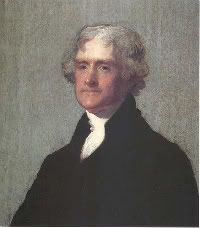Energy Policy Needs to Come from “Enlightened Government”

In his farewell address in 1961, Dwight D. Eisenhower, warned us:
“You and I, and our government must avoid the impulse to live only for today, plundering, for our own ease and convenience, the precious resources of tomorrow.”
I was only six years old at the time, quite unaware of the insight that Ike had bestowed upon us. Of course, he wasn’t the first. 150 years earlier, Thomas Jefferson wrote: “It is incumbent on every generation to pay its own debts as it goes.”
I bring this up to call your attention to Jeremy Grantham’s quarterly newsletter, in which he writes about the strengths and weaknesses of capitalism as it applies to forming the underpinning of our society. He notes:
Capitalism, despite its magnificent virtues in the short term – above all, its ability to adjust to changing conditions – has several weaknesses that affect this issue.
o It cannot deal with the tragedy of the commons, e.g., overfishing, collective soil erosion, and air contamination.
o The finiteness of natural resources is simply ignored, and pricing is based entirely on short-term supply and demand.
o More generally, because of the use of very high discount rates, modern capitalism attributes no material cost to damage that occurs far into the future. Our grandchildren and the problems they will face because of a warming planet with increasing weather instability and, particularly, with resource shortages, have, to the standard capitalist approach, no material present value.
It is clear that there is a time and place for an enlightened government to step in and regulate market activity such that it does not jeopardize our future.
Enlightened government. Does anybody know where I can get some of that?

 I just received an interesting phone call. Chris Mason, renewable energy contractor in Anguilla (Caribbean) called to discuss my work in Bermuda and understand how it might apply to his country a thousand miles south.
I just received an interesting phone call. Chris Mason, renewable energy contractor in Anguilla (Caribbean) called to discuss my work in Bermuda and understand how it might apply to his country a thousand miles south.


